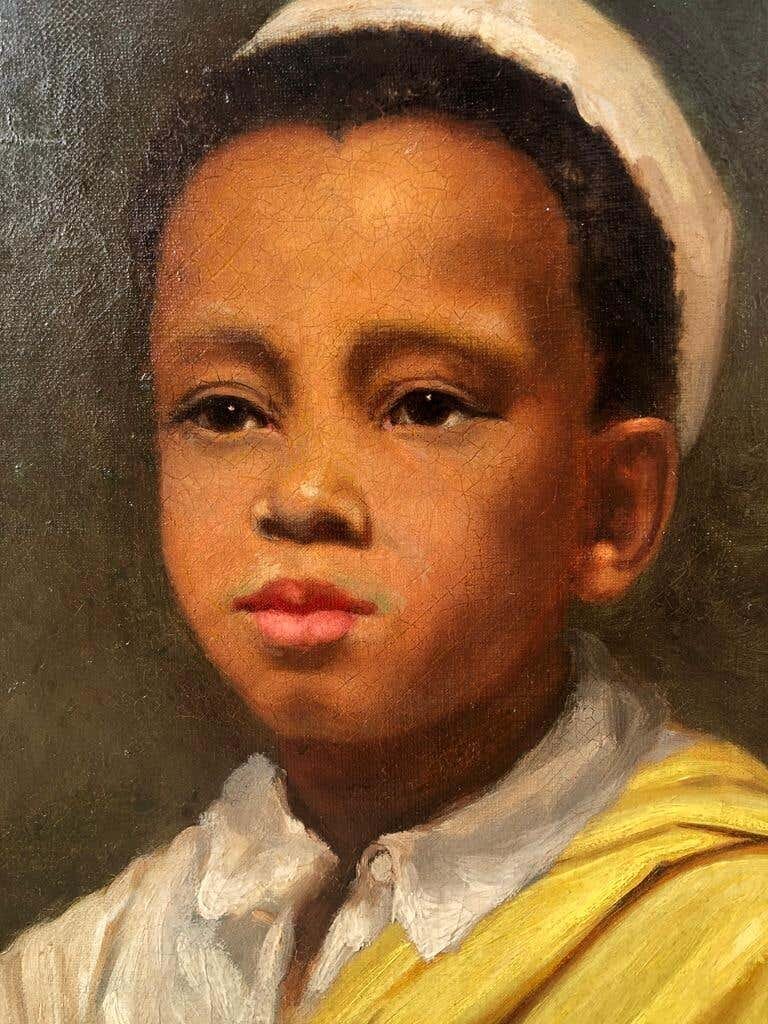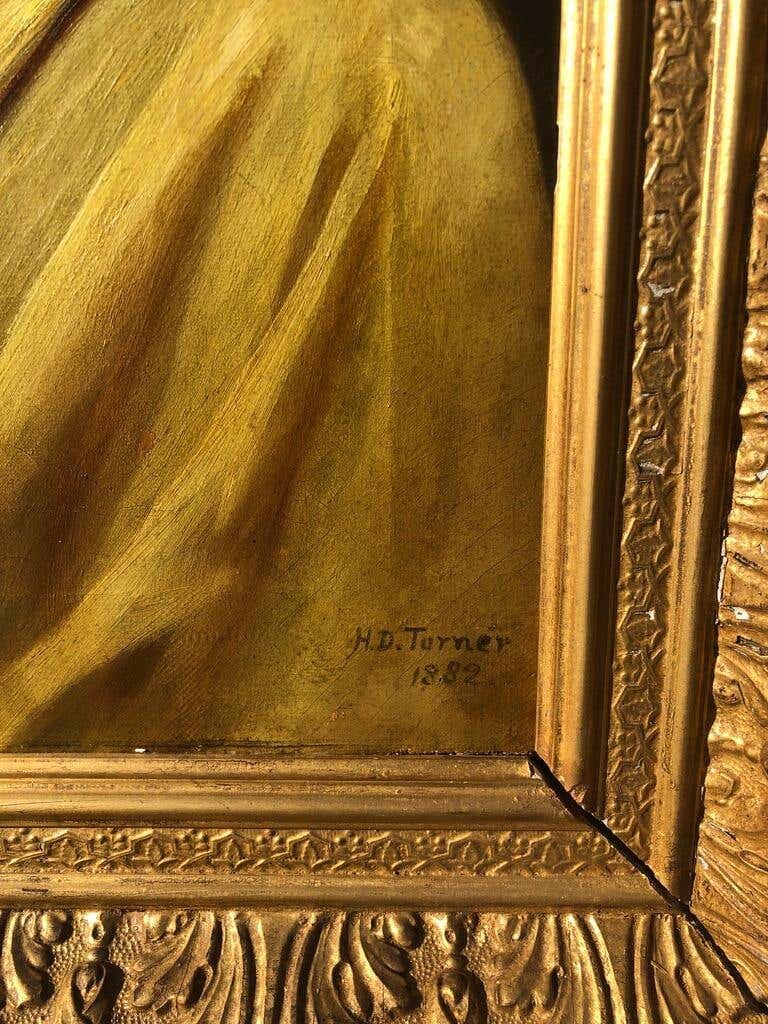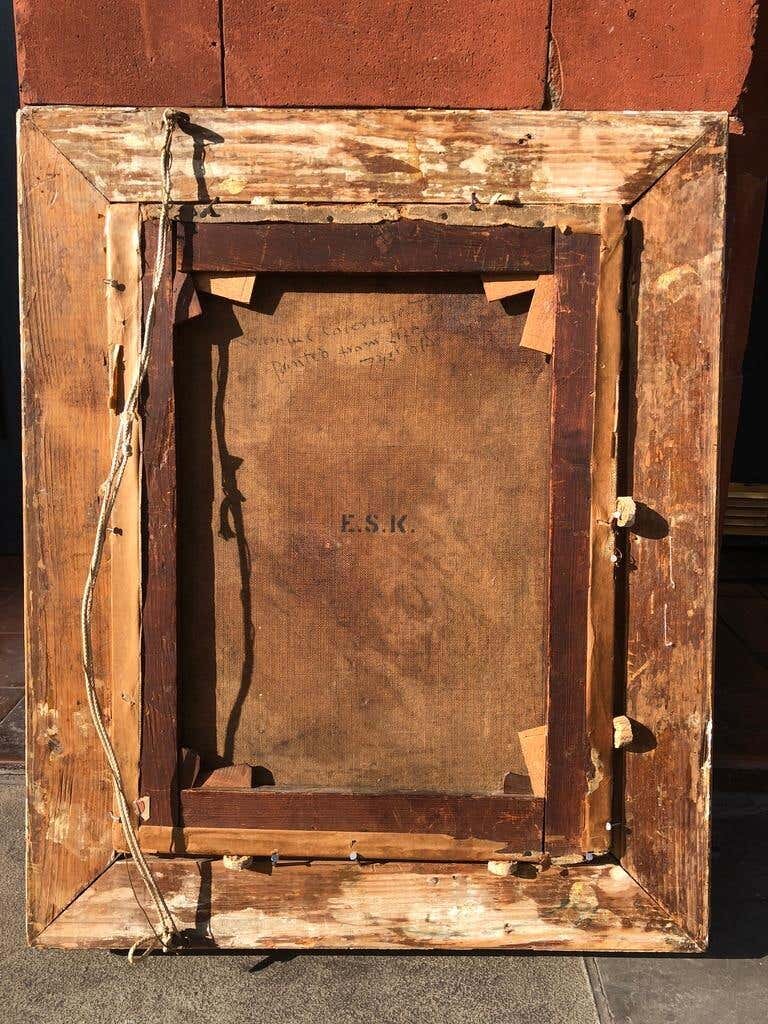H.D. TURNER (19th Century, English)
Portrait Study of Samuel Coleridge-Taylor (1875-1912, English) aged Seven
Signed and dated 1882
Oil on canvas
Framed 25 x 21 inches
Price: £38,000 GBP
Samuel Coleridge-Taylor was born in 1872 at 15 Theobald’s Road, Holborn, London, to an English mother, and a father who was a surgeon from Sierra Leone. The Coleridge part of the surname is believed to have been added to Taylor after the poet Samuel Taylor-Coleridge. Eight years after its opening in 1882, Coleridge-Taylor won a scholarship to the Royal College of Music where he shone and prospered, moving from playing the violin to becoming a world class composer.
Coleridge-Taylor was brought up by his mother in Croydon after his father disappeared back to Sierra Leone upon finishing his medical studies at King’s College, London. It is also known that a couple called Sarah and Benjamin Holman had something to do with Samuel Taylor-Coleridge’s upbringing and bought him his first violin and violin lesson. At seven years old he sat as a model for the Croydon Arts Club where two portraits by different artists where painted. One of these now resides in the National Portrait Gallery, London (NPG 5724).
Coleridge-Taylor started using his musical talents from a young age, singing in the local choir at St George’s aged ten. The Honorary Choirmaster Colonel Herbert A. Walters oversaw his early career and organised for Samuel to play violin at the Royal College of Music, where he won a scholarship at fifteen. After graduating from playing violin he went on to study composition under the composer, Sir Charles Villiers Stanford - one of the great men behind the renaissance of English music in the late 19th Century.
Coleridge-Taylor had elevated himself into the most influential musical sphere of the day, where he acquired patrons who could help develop his career. August Jaeger, an editor at Novello & Co, had been tipped off about Coleridge-Taylor’s great talent and set about publishing the first of a series of Coleridge-Taylor’s anthems. This work with Novello's would span the rest of the composer’s life.
The African-American poet and novelist Paul Laurence Dunbar (1872-1906) visited London in 1896. Dunbar’s meeting with Coleridge-Taylor sparked a series of collaborations between the two men. Another American poet Henry Longfellow (1807-1882) inspired ‘Hiawatha’s Wedding Feast’. ‘Hiawatha’ was a great evolution in music at the time, breaking away from the religious and intensely serious music of the day. Coleridge-Taylor’s visits to the USA were some of the great high points of his career.
Invited by the Coleridge-Taylor Choral Society of Washington D.C. (founded in 1901 by black choral singers), Coleridge-Taylor made three tours of the USA: in 1904, 1906 and 1910. He was a beacon for African-Americans visiting London, including the baritone Harry Burleigh and violinist Clarence Cameron White. Burleigh was reputed to be the man who introduced Dvorak to Negro spirituals, and he became one of Coleridge-Taylor’s staunchest supporters in the USA.
In 1901 a Samuel Coleridge-Taylor Society for black singers was formed in Washington D.C. Coleridge-Taylor’s popularity with African-Americans in the US would have been mutually exciting. These US citizens delighted in seeing a successful black British composer, celebrating his status and dignity in the hope and that they might be able to achieve a similar level of recognition for their own choir.
Whilst waiting for a train at West Croydon on 28th August, 1912 Coleridge-Taylor collapsed. He died just a few days later of pneumonia at his home in Croydon. Overwork seems to have been the main cause of death.




